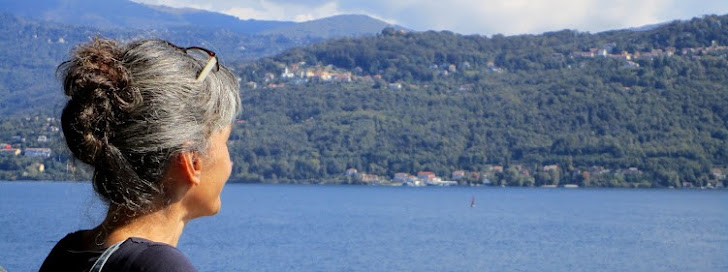"An unplanned exercise in cooperation is taking place, with animal and plant, fungus and microbe, competing and collaborating in complex ways. This is an ecosystem discovering itself, and it is here that the fundamental patterns of life on land are been established." Thomas Halliday (2022). Otherlands: A World in the Making. Photo by
Monica Pinheiro free to use if you respect the license CC BY-NC-SA (CC).

"The person figured here is not an autonomous, rational actor but an unfolding, shifting biography of culturally and materially specific experiences, relations, and possibilities inflected by each next encounter (...) in uniquely particular ways." (Lucy Suchman, Human-machine reconfigurations: plans and situated actions, 2009, 281)
Showing posts with label collaboration. Show all posts
Showing posts with label collaboration. Show all posts
Dec 11, 2022
December
Apr 15, 2020
Diversity

"(...) trees and plants aren´t simply competing with one another. (...) Instead, over millions of years vegetation has built vast collaborative networks to allow the system as a whole to thrieve. And that system includes us." Gary Ferguson, 2019. Eight Master Lessons of Nature. Image by Monica Pinheiro, license CC BY-NC-SA (CC).
by
Monica Pinheiro
0
comments
 Labels:
biodiversity,
books,
collaboration,
diversity,
networks,
systems
Labels:
biodiversity,
books,
collaboration,
diversity,
networks,
systems
Oct 17, 2011
Distance (still) matters! a)
Follow up on the related myth that «distance is dead», in a paper by
Petra Sonderegger (2009) in R&D working context across disperse teams in project work. Creating Shared Understanding in Research Across Distance: Distance Collaboratiion across Cultures in R&D. In e-Research: Transformation in Scholarly Practice:
"In summary, shared understanding and the flow of tacit knowledge are key elements of innovative collaboration; and trust, shared context, and frequent interactions (both formal and informal) are central to establishing these elements. Despite proclamations of the “death of distance” (Cairncross, 1997), physical presence and shared space are still important in today’s world, especially for people who are highly interdependent and faced with ambiguous situations. This study was designed to explore the potential and the limitations of distance collaboration in R&D, given the communication tools available. (...) For the researchers in this study, in-person meetings led to a higher level of comfort in collaboration. They trusted their counterparts more and moved the relationship from a purely professional level to a more personal level; they made fewer negative attributions in situations of uncertainty. An increase in spontaneity and a decrease in formality helped overcome some difficulties in distance communication."a) Note to self: see another post with same title, and follow tag «distance».
Sep 10, 2010
Distance (still) matters!
Olson, Gary M. and Olson, Judith S.(2000). Distance Matters. Human-Computer Interaction, vol. 15(2), pp.139-178.
Contradicting the idea that «Distance is Dead», and supporting with substantive theory in their study, Olson and Olson (2000) clearly show that technological mediated interactions will not completely substitute presence and co-located interactions, even with sophisticated technological use for work: "Distance is not only alive and well, it is in several essential respect immortal" ["(...) synthesized into four key concepts: common ground, coupling of work, collaboration readiness, and collaboration technology readiness"]
Aug 31, 2009
idiosyncrasies and information behaviour in teams
Hyldegård, J. (2009). "Personality traits and group-based information behaviour: an exploratory study" Information Research, 14(2) paper 402:
"(...) Many studies exist on information behaviour in groups or teams (e.g., Case 2007), and a number of influencing variables have been identified, such as role, complexity of work task and social cost. Building upon this previous research it is hypothesised that the mere group setting in focus here will influence as well as mediate between individuals’ personality traits and their information behaviour."
Jun 2, 2009
integrating flows of communication
Notice how Google Wave focus is not on knowledge management (KM) but on communication and collaboration. More precisely, in integrating flows of communication. And although it will only be release in the end of the year, you can show your interest by submitting your email.
After seeing the video, I can't wait to use it in real life research projects. While the use of web tools was of great value, there where always issues of individual preference for using different tools, and in the end we ended up with more scattered information across different tools. Because most of them where used only if a private space was provided, it added for the difficulty of moving information from one place to the other.
As for the last words in the Google Wave presentation "can't wait to see what you are gone come up with, guys", I'm just waiting for my time to come and play around with it :-)
What is a wave?
A wave is equal parts conversation and document. People can communicate and work together with richly formatted text, photos, videos, maps, and more.
A wave is shared. Any participant can reply anywhere in the message, edit the content and add participants at any point in the process. Then playback lets anyone rewind the wave to see who said what and when.
A wave is live. With live transmission as you type, participants on a wave can have faster conversations, see edits and interact with extensions in real-time.
Subscribe to:
Posts (Atom)
